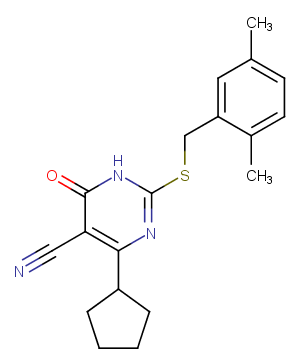Powder: -20°C for 3 years | In solvent: -80°C for 1 year


HJC0197 selectively blocks cAMP-induced Epac activation. HJC0197 is an effective exchange protein. Which straightly activated by cAMP (Epac) antagonist (IC50=5.9 μM for Epac2).

| Pack Size | Availability | Price/USD | Quantity |
|---|---|---|---|
| 1 mg | In stock | $ 38.00 | |
| 5 mg | In stock | $ 85.00 | |
| 10 mg | In stock | $ 130.00 | |
| 25 mg | In stock | $ 228.00 | |
| 50 mg | In stock | $ 369.00 | |
| 100 mg | In stock | $ 549.00 | |
| 1 mL * 10 mM (in DMSO) | In stock | $ 97.00 |


| Description | HJC0197 selectively blocks cAMP-induced Epac activation. HJC0197 is an effective exchange protein. Which straightly activated by cAMP (Epac) antagonist (IC50=5.9 μM for Epac2). |
| In vitro | In the presence of an equal concentration of cAMP, HJC0197 (25 μM) also inhibits Epac1-mediated Rap1-GDP exchange activity at 25 μM. |
| Molecular Weight | 339.45 |
| Formula | C19H21N3OS |
| CAS No. | 1383539-73-8 |
Powder: -20°C for 3 years | In solvent: -80°C for 1 year
DMSO: 25 mg/mL (73.65 mM)
You can also refer to dose conversion for different animals. More
bottom
Please see Inhibitor Handling Instructions for more frequently ask questions. Topics include: how to prepare stock solutions, how to store products, and cautions on cell-based assays & animal experiments, etc.
HJC0197 1383539-73-8 GPCR/G Protein MAPK cAMP Ras cAMP-signaling activation GEF cellular inhibit HJC-0197 phosphorylation processes HJC 0197 Inhibitor inhibitor
